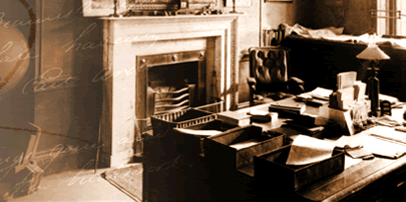



Portrait of Thomas Telford (ICE)

Portrait of George Stephenson (ICE)

Portrait of George and Robert
Stephenson (ICE)

Menai bridges: Telford's in foreground,
Robert Stephenson's at rear
(Elton Collection: Ironbridge Gorge
Museum Trust)

Daniel Gooch (Elton Collection:
Ironbridge Gorge Museum Trust)




Conference of Engineers at Britannia Bridge' 1851-3 John Lucas
(Institution of Civil Engineers)
However, Brunel was not working in isolation. During the nineteenth century there were others making discoveries and applying new knowledge in ways that had far reaching consequences for Britain and the world, whether for good or ill. Close collaboration and friendships existed between many of the famous engineers and innovators of the period. In addition, valuable ideas and contributions would have been made by those whose names have been lost over time, if they were ever known at all, not least those thousands who made up the manual workforce that physically built Brunel’s projects and the businessmen who paid for it.
Among the key figures of this period were:
Thomas Telford (1757-1834)
Today we can only marvel at the amount of work Telford managed to cram into one lifetime. His spur was not honour or monetary reward but something which has become extremely rare today – an immense gusto and enthusiasm. His work fascinated him and he devoted himself to it utterly. The more difficult the task the more it appealed to him. L.T.C. Rolt in Thomas Telford 1958
Richard Trevithick (1771-1833)
He may have been a wayward genius, but genius he certainly was: a giant of a man, and a giant in the world of steam. Anthony Burton in Richard Trevithick 2000
George Stephenson (1781-1848)
...the very model of the Victorian ideal: the self-made man who rose from a humble cottage at Killingworth Colliery to make a fortune by native talent, hard work and the insight and determination to give the public what it wanted. Harold Perkin in The Age of Railway 1971
Joseph Paxton (1803-1865)
His character sprang from the spirit of the age – determined by imagination, unremitting energy, motivation, and enthusiasm – a coupling of enterprise and ambition. Like many of this contemporaries, he appeared to be able to turn his hand to almost any task: an untrained engineer and architect, half-amateur and half-professional, he not only built the most perfect greenhouses in history but became the greatest horticulturist of his day. Kate Colquhoun in A Thing in Disguise: the visionary life of Joseph Paxton 2003
Robert Stephenson (1803-1859)
Stephenson was widely admired across the whole spectrum of nineteenth century society. Integrity was perhaps his greatest quality, demonstrated by the extraordinary number of contentious issues of a business, financial and engineering nature that were presented to him for arbitration. From the Introduction to Robert Stephenson: the eminent engineer 2004
Daniel Gooch (1816-1889)
Gooch was at least Isambard’s equal, not only intellectually but also in energy and commitment to the job... They complemented each other: the one a civil engineering genius, the other a brilliant locomotive engineer. Adrian Vaughan in Isambard Kingdom Brunel: engineering knight errant 1991
Find out more about the people who helped propel the world into the modern age on the Industrial Revolution page.